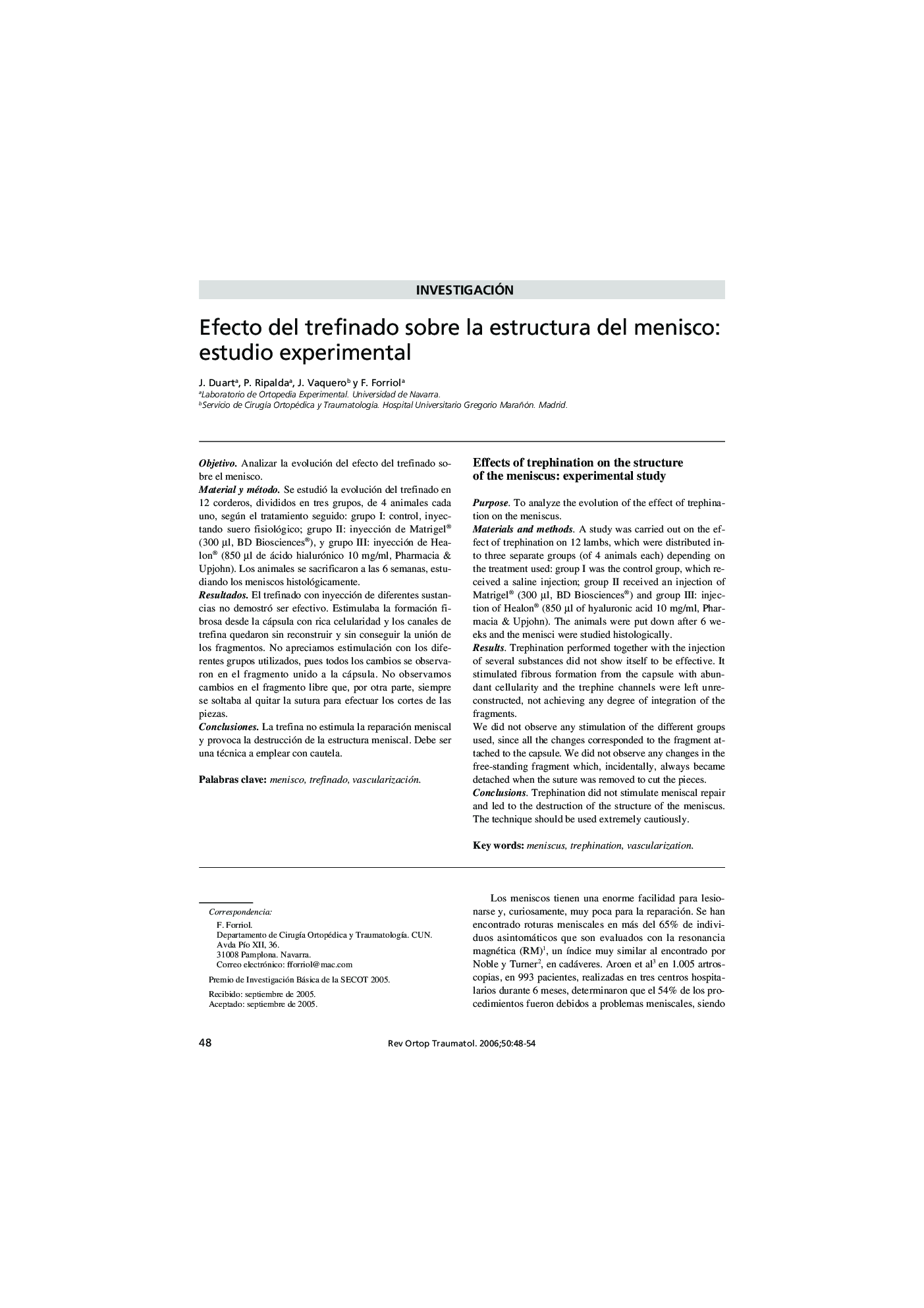| Article ID | Journal | Published Year | Pages | File Type |
|---|---|---|---|---|
| 4088141 | Revista de Ortopedia y Traumatología | 2006 | 7 Pages |
ObjetivoAnalizar la evolución del efecto del trefinado sobre el menisco.Material y métodoSe estudió la evolución del trefinado en 12 corderos, divididos en tres grupos, de 4 animales cada uno, según el tratamiento seguido: grupo I: control, inyectando suero fisiológico; grupo II: inyección de Matrigel® (300 μl, BD Biosciences®), y grupo III: inyección de Healon ® (850 μl de ácido hialurónico 10 mg/ml, Pharmacia & Upjohn). Los animales se sacrificaron a las 6 semanas, estudiando los meniscos histológicamente.ResultadosEl trefinado con inyección de diferentes sustancias no demostró ser efectivo. Estimulaba la formación fibrosa desde la cápsula con rica celularidad y los canales de trefina quedaron sin reconstruir y sin conseguir la unión de los fragmentos. No apreciamos estimulación con los diferentes grupos utilizados, pues todos los cambios se observaron en el fragmento unido a la cápsula. No observamos cambios en el fragmento libre que, por otra parte, siempre se soltaba al quitar la sutura para efectuar los cortes de las piezas.ConclusionesLa trefina no estimula la reparación meniscal y provoca la destrucción de la estructura meniscal. Debe ser una técnica a emplear con cautela.
PurposeTo analyze the evolution of the effect of trephination on the meniscus.Materials and methodsA study was carried out on the effect of trephination on 12 lambs, which were distributed into three separate groups (of 4 animals each) depending on the treatment used: group I was the control group, which received a saline injection; group II received an injection of Matrigel® (300 μl, BD Biosciences®) and group III: injection of Healon® (850 μl of hyaluronic acid 10 mg/ml, Pharmacia & Upjohn). The animals were put down after 6 weeks and the menisci were studied histologically.ResultsTrephination performed together with the injection of several substances did not show itself to be effective. It stimulated fibrous formation from the capsule with abundant cellularity and the trephine channels were left unreconstructed, not achieving any degree of integration of the fragments. We did not observe any stimulation of the different groups used, since all the changes corresponded to the fragment attached to the capsule. We did not observe any changes in the free-standing fragment which, incidentally, always became detached when the suture was removed to cut the pieces.ConclusionsTrephination did not stimulate meniscal repair and led to the destruction of the structure of the meniscus. The technique should be used extremely cautiously.
